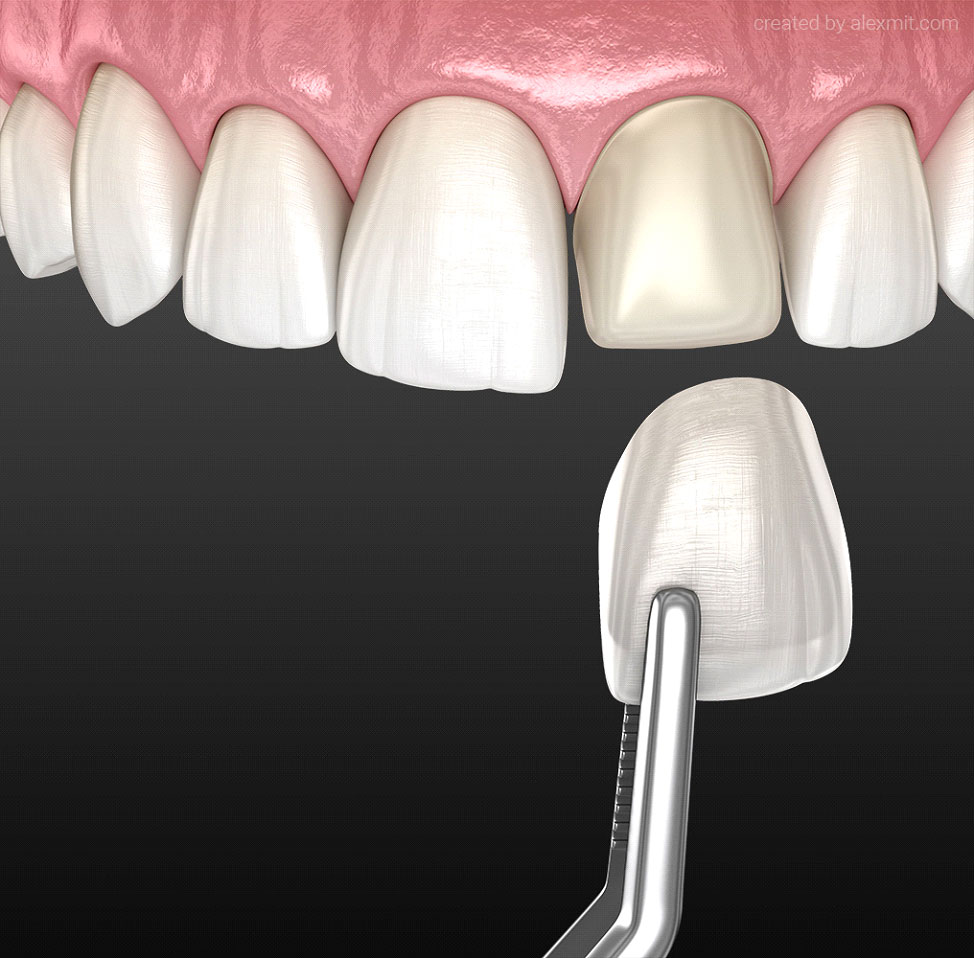
Veneers are plates that are attached to the outer surfaces of the teeth. They allow you to restore the restoration and restore the appearance of the smile zone. The adhesion of vinyl to the anterior wall of the tooth is very strong, which can be compared with the strength of the bonding of natural tooth enamel to dentin.
Dental veneers are a popular cosmetic dentistry treatment that can transform the appearance of your smile. These thin shells are custom-made to fit over your teeth, hiding imperfections and creating a bright, even, and beautiful smile.
If you're considering dental veneers, it's important to understand the process and what you can expect from this treatment. In this article, we'll discuss everything you need to know about dental veneers, including what they are, how they work, and what the benefits and drawbacks are.
Veneer overlays can eliminate the following disadvantages:
- gaps between teeth;
- curvature, chips and irregularities;
- yellowness or darkening of the enamel;
- enamel defects after previous diseases or infections of the oral cavity.
A distinctive feature of veneers is their resistance to stains. Over time, they do not change color and are not affected by the negative effects of tobacco, coffee or tea. On the smooth surface of veneers, plaque practically does not accumulate.
How are veneers installed?
How long the installation of veneers on the front teeth will take depends on the type of microprostheses. First, the dental unit is prepared for restoration. The doctor takes impressions, which are sent to the dental laboratory. At the second visit to the dentist, the patient is tried on and fixed the finished structure. The manufacture of a micro-prosthesis takes some time, and therefore the patient is fitted with temporary protective plates. Direct vining is performed by layer-by-layer application. The process looks something like this:
- degreasing the enamel surface;
- the imposition of a light-cured material;
- giving the necessary shape, size, color;
- illumination with a polymerizing lamp;
- final polish.
How are veneers made?
In dentistry, there are two methods for making veneers: direct and indirect. In the first case, the veneering procedure is carried out directly in the dentist's chair. A filling material is applied in layers on the surface of the tooth, which is further processed after hardening. This option does not require turning, it allows you to correct individual defects in one go: the shape of the tooth, color or its transparency.
The indirect method involves the manufacture of onlays in a dental laboratory based on casts that are removed with special silicone masses from the patient's jaw. At the first visit, temporary crowns are placed on the teeth, at the next visit, the veneers are adjusted in size and fixed. In this case, the overlays are made of durable compounds - ceramics or zirconium dioxide, which are more resistant to mechanical damage.






